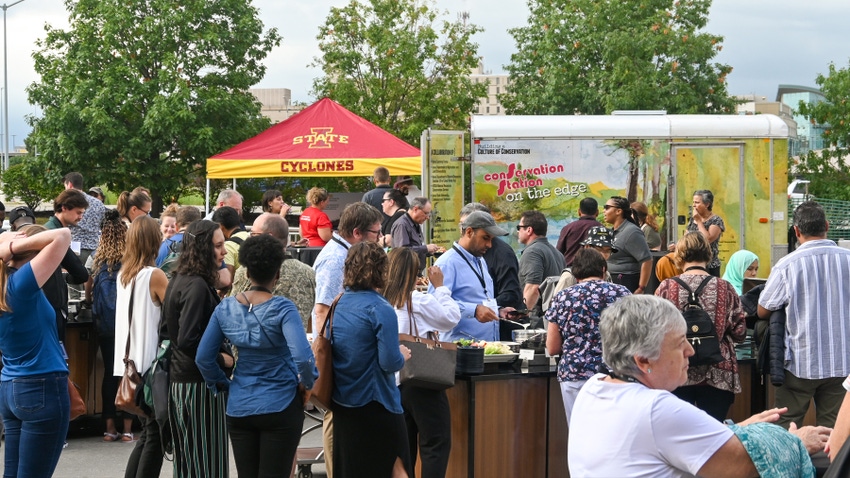August 18, 2023

At the 78th conference of the Soil and Water Conservation Society, attendees gathered from around the world to learn and share about conservation projects, practices and research Aug. 6-9 in Des Moines, Iowa.
The SWCS conference was built around the theme, “Healthy Land, Clean Water: Cultivating a Legacy of Conservation,” with a focus on sharing successes, embracing lessons learned and collectively moving toward natural resources goals with greater speed, efficiency, effectiveness and inclusivity.
A key objective of the conference was the application of creativity, innovation and imagination in addressing and solving the critical natural resources and water challenges facing the world today.
Board member Roger Wolf kicked off the session with a brief history of SWCS, the impact the society has made over the decades, and the idea of a trans-disciplinary integration of different research, scientific, technological and practical pieces that contribute to conservation practices.
He then introduced Jacqueline Comito, program director of the Iowa Learning Farms and Water Rocks! programs at Iowa State University, to speak about the interconnections and possibilities that can contribute to making a difference in conservation through the blending of art, science, imagination, and creativity.
Comito is also an anthropologist, artist, musician and educator. She spoke about the “art” of conservation and challenged the audience to consider how conservation is done and why the society’s mission statement includes the word art.
SWCS mission
The Soil and Water Conservation Society is the premier international organization for professionals who practice and advance the science and art of natural resources conservation.
“I wanted to learn when and why the word art was included in the mission statement,” Comito said. “I learned that around 1952, the society’s leadership was looking to differentiate the organization and to draw in different perspectives and members from diverse disciplines and backgrounds. Expanding the scope of the mission statement to include art was one way they chose to accomplish this goal.”
Discussing the intersections of art and conservation, Comito first helped the audience gain a better understanding of art, and how feelings and beauty are essential to art. She said, “Art can be an expression of the feelings and beauty we experience in nature, and those reflections of nature can provide inspiration to imagine new and innovative approaches and solutions to environmental problems.”
Comito encouraged engaging feelings and beauty when approaching conservation education and outreach, and also fueling the imagination of scientists and conservationists looking to solve difficult problems.
“It is crucial that we stimulate the imagining of what we want to accomplish and couple that with the focused effort necessary to creatively develop solutions,” she said. “Creativity is the foundation of both art and science. Therefore, with creativity, anything is possible.”
Program successes
Drawing on the successes in education and outreach programs from Iowa Learning Farms and Water Rocks, Comito highlighted the absolute need to take risks and try things out to reimagine the world we want to be a part of.
“We sometimes think flights of imagination are for small children, not adults and certainly not for serious scientists,” Comito said. “Nothing should be further from the truth. Releasing our imaginations to consider situations we are tired of hearing about or frustrating problems that we cannot seem to solve can often open doors to new approaches and ideas.”
Inviting the audience to visit the award-winning Conservation Station trailers from ISU on display at the conference, Comito referred to the manifestation of art and creativity that makes these mobile education platforms effective and successful.
“These trailers are works of art and include feats of engineering and science that are designed to stimulate conversations, discussions and sometimes disagreements that are crucial to improving perceptions and understanding of conservation goals and practices,” she said. “Through creative curation of art and demonstrations, we have provided an imaginative portrayal of a better Iowa and a better world — and we use the beauty portrayed in the art to evoke feelings that bridge the past and the possibilities of a future people hope to achieve.”
In closing, Comito thanked the many organizations and agencies that have sponsored Iowa Learning Farms and Water Rocks programming and encouraged the SWCS audience members to engage the artist more fully inside each of them to energize creative action and help achieve the organization’s goals.
Ripley is manager of Iowa Learning Farms and a conservation outreach specialist for the Water Rocks! program.
Read more about:
EducationAbout the Author(s)
You May Also Like




